1,071 news posts

Frontiers news
24 Nov 2022
Former Amazon HR leader Kanika Mehra joins Frontiers
Research publisher Frontiers appoints Kanika Suri Mehra as chief people officer (CPO). Kanika will be responsible for all aspects of the human resources strategy, including talent management, leadership development, and compensation and benefits. Kanika will be supporting the publisher in achieving its mission of making all science open, and embedding Frontiers’ culture and employee experience program across its 17 global offices. Photo credit: Frontiers Kanika has more than eighteen years’ experience leading human resources for global organizations. She joins Frontiers from Amazon, where she led the Amazon Web Services (AWS) HR Partners, supporting the hypergrowth in 30+ countries across Europe, Middle East and Africa (EMEA) for nearly twelve years. In addition, she chartered the Change Management project with Workday at Amazon and established a 500+ team for Amazon’s HR Shared Services in Prague supporting 28,000 EMEA employees. Prior to that, Kanika had successful HR career tenures at Citibank in New York and Microsoft in Seattle. Kanika has a Master’s degree in Industrial Relations and Human Resources from Pennsylvania State University, USA. Frontiers’ co-founder and chief executive officer Kamila Markram says, “Kanika is an outstanding human resources leader with an established track record of delivering successful people, talent, and workforce management […]
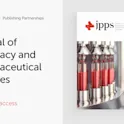
Frontiers news
24 Nov 2022
Canadian Society for Pharmaceutical Sciences signs publishing agreement with Frontiers
The Journal of Pharmacy and Pharmaceutical Sciences (JPPS) will move to gold open access publisher Frontiers as part of an agreement signed by the Canadian Society for Pharmaceutical Sciences (CSPS). The partnership was finalized in September 2022 and the journal will open for submissions with Frontiers in early 2023. The agreement will be Frontiers’ first partnership in Canada. Commenting on the agreement, JPPS Editor in Chief Fakhreddin Jamali said: ‘Partnering with Frontiers will enable us to take our commitment to open access publishing to the next level. We look forward to collaborating with the team to further grow and develop JPPS and build a sustainable model for the journal’s future.’ Dedicated to the pursuit of excellence in pharmaceutical sciences, CSPS supports research, development, and training in the field. It provides regular workshops and an annual symposium for its members. Established in 1998, JPPS is the society’s official journal and a key part of its mission. The journal was an early adopter of an open access publishing model, the first in its field, and has been free to access from the outset. Robyn Mugridge, Head of Publishing Partnerships at Frontiers, commented: ‘We are delighted to welcome the Journal of Pharmacy and Pharmaceutical […]

Featured news
24 Nov 2022
How you help a child go to sleep is related to their behavioral development, finds new study
By Suzanna Burgelman, Frontiers science writer Image: yamasan0708/Shutterstock.com A group of international researchers examined parental methods to help toddlers sleep across 14 cultures and found that these methods are related to the development of a child’s temperament. The researchers suggested focusing on better sleep-related parenting practices to support positive behavioral development across cultures. The importance of good sleep during childhood development has been extensively researched. Bad sleep quality and behaviors are detrimental to neurobehavioral functioning, emotional reactivity and regulation, and can pose a risk for future psychopathology. “Parental sleeping techniques are correlated with children’s sleep quality, and the importance of cultural context in child development has been long recognized,” said corresponding author Ms Christie Pham, of Washington State University. “We wanted to examine whether cross-cultural differences in parental sleep-supporting strategies account for differences in toddler temperament.” In a study published in Frontiers in Psychology, Pham and her colleagues studied the effect of different parental sleep-supporting techniques on child temperament across 14 cultures. They hypothesized that passive ways of helping a child fall asleep (eg, cuddling, singing, and reading), but not active methods (eg, walking, car rides, and playing), would be positively related to a child’s temperament. ► Read original article► Download original […]
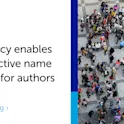
Frontiers news
23 Nov 2022
New policy enables retrospective name changes for authors
Frontiers is pleased to announce a new policy to make it easier for authors to retrospectively change either their name, pronouns, or both. The policy has been created as part of Frontiers’ commitment to improving equity, diversity and inclusion in publishing and covers name changes made for any reason, including marital status, gender identity, or religion. Authors will be able to request a change to their name and/or pronouns by completing a simple form available on the Frontiers website. Once processed the request will be actioned across all publications and on the Frontiers publishing platform. Authors will also be able to opt for this update to be made silently, meaning that it will not be necessary to publish a correction when the change is implemented. Mirjam Eckert, Chief Publishing Officer at Frontiers said: ‘we are really delighted to be able to offer our authors a straightforward pathway to making retrospective name changes on publications and across our platform. By introducing this new policy, we want to ensure that all Frontiers authors receive correct recognition for their work and that the process to implement name changes is clear, convenient, and fair.’ Kanika Suri Mehra, Chief People Officer at Frontiers said: ‘we […]
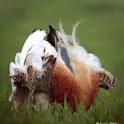
Featured news
23 Nov 2022
World’s heaviest flying bird may be self-medicating on plants used in traditional medicine
By Mischa Dijkstra, Frontiers science writer Great bustard male displaying on lek. Image credit: Carlos Palacín Researchers show that great bustards in Spain prefer to eat two plant species with compounds active in vitro against protozoa, nematodes, and fungi: corn poppies and purple viper’s bugloss. Males, who spend much time and energy on sexual displays during the mating season, have a stronger preference for these plants than females, and more so during the mating season than at other times of the year. The authors thus consider great bustards as prime candidates for non-human animals that self-medicate, but stress that more research is needed to definitively prove this. If you see a great bustard (Otis tarda) in the wild, you’re unlikely to forget it. Massive, colorful, and impossible to mistake, they are the heaviest birds living today capable of flight, with the greatest size difference between the sexes. They are also ‘lek breeders’, where males gather at chosen sites to put on an audiovisual show for the visiting females, who choose a mate based on his appearance and the quality of his showbirdship. But now, a study in Frontiers in Ecology and Evolution suggests that great bustards have another claim to […]
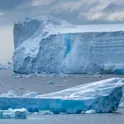
Climate action
17 Nov 2022
Vast phytoplankton blooms may be lurking beneath Antarctic ice
by Angharad Brewer Gillham, Frontiers science writer Image: Shutterstock.com Researchers using NASA’s Earth observing system find that Antarctic sea ice allows enough light in to let hidden phytoplankton bloom in the Southern Ocean. Until now, we thought the packed sea ice of the Southern Ocean blocked all light from reaching the sea beneath, preventing phytoplankton — tiny algae which are the base of aquatic food webs — from growing there. The less light available, the less the phytoplankton can photosynthesize and therefore the less phytoplankton there will be, heavily restricting life beneath the ice. But research inspired by increasing under-ice blooms of phytoplankton in the Arctic has shown that Antarctic waters also have unexpected denizens, indicating that there is underestimated ecological variability under the ice. Blooms are often spotted as soon as the sea ice begins its seasonal retreat, supported by plenty of light and freshwater with high iron content. Yet a team led by Dr Christopher Horvat of Brown University and the University of Auckland suspected that there would already be potential phytoplankton blooms in waiting. Writing in Frontiers in Marine Science, they described using sampling from independent BGC-Argo floats and climate model output to estimate light availability beneath […]
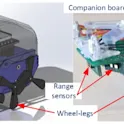
Engineering
16 Nov 2022
Smart ‘Joey’ bots could soon swarm underground to clean and inspect our pipes
By Mischa Dijkstra, Frontiers science writer Joey’s design. Image credit: TL Nguyen, A Blight, A Pickering, A Barber, GH Jackson-Mills, JH Boyle, R Richardson, M Dogar, N Cohen Researchers from the University of Leeds have developed the first mini-robot, called Joey, that can find its own way independently through networks of narrow pipes underground, to inspect any damage or leaks. Joeys are cheap to produce, smart, small, and light, and can move through pipes inclined at a slope or over slippery or muddy sediment at the bottom of the pipes. Future versions of Joey will operate in swarms, with their mobile base on a larger ‘mother’ robot Kanga, which will be equipped with arms and tools for repairs to the pipes. Beneath our streets lies a maze of pipes, conduits for water, sewage, and gas. Regular inspection of these pipes for leaks, or repair, normally requires these to be dug up. The latter is not only onerous and expensive – with an estimated annual cost of £5.5bn in the UK alone – but causes disruption to traffic as well as nuisance to people living nearby, not to mention damage to the environment. Now imagine a robot that can find its […]

Featured news
11 Nov 2022
Monica Montgomery – Policies for Peace
Author: Lucy Thompson Monica Montgomery is the Political Director for the non-profit, non-partisan advocacy organization Council for a Livable World. The organization is dedicated to reducing the danger of nuclear weapons and eventually eliminating them through advocating sensible national security policies and helping elect congressional candidates who support them. Today, we discuss Monica’s journey into policymaking, the importance of representation, and the intersection of peace and policy within society. Photo credit: Monica Montgomery What was your inspiration that led you to your current role? I first became interested in nuclear arms control, non-proliferation, and disarmament work through my undergraduate studies at University of Notre Dame, where I had a professor who had extensively worked in Washington, DC on disarmament issues. He organized a trip to the Vatican for a conference that was hosted by Pope Francis himself on issues of nuclear disarmament. I attended this conference and I was really inspired by the message of the Pope. I’ve had Catholic schooling all my life, but this was not something that I had really ever engaged in or had ever thought of nuclear arms control within this sphere. I think that a lot of the younger generation in the US, at […]
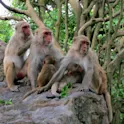
Featured news
11 Nov 2022
Having good friendships may make for a healthier gut microbiome
By Mischa Dijkstra, Frontiers science writer Grooming rhesus macaques on Cayo Santiago. Image credit: Lauren Brent Researchers show for the first time that monkeys that are more sociable – eg, grooming or being groomed more often, and with more grooming partners – have a healthier gut microbiome. For example, they have more of the beneficial bacteria Faecalibacterium and Prevotella, and fewer of the typically pathogenic bacteria Streptococcus. This is further evidence that in primates, social connectedness translates into good physical and mental health, and vice versa. Social connections are essential for good health and wellbeing in social animals, such as ourselves and other primates. There is also increasing evidence that the gut microbiome – through the so-called ‘gut-brain axis’ – plays a key role in our physical and mental health and that bacteria can be transmitted socially, for example through touch. So how does social connectedness translate into the composition and diversity of the gut microbiome? That’s the topic of a new study in Frontiers in Microbiology on rhesus macaques, Macaca mulatta. Lead author Dr Katerina Johnson, a research associate at the Department of Experimental Psychology and the Department of Psychiatry of the University of Oxford, said: “Here we show […]

Engineering
07 Nov 2022
5 articles you need to check out on the future of materials research
By Angharad Brewer Gillham, Frontiers science writer Image: Shutterstock.com In a fast-moving field of research like materials science, it can be difficult to keep up with the latest breakthroughs. Now at Frontiers, we highlight just five of the latest research articles to shed more light on the way we build our world around us, published by top researchers in the Frontiers in Materials Research Topic ‘Horizons in Materials’. Growing green technology: from trees to tech Scientists aiming to power the appliances of the future are developing special phenolic compounds from resins instead of petrol – a first step towards organic electrodes. Since biomass is the only green, renewable source of carbon materials, carbon-based electrodes for new-generation metal-ion batteries could be a more eco-friendly replacement for lithium-ion batteries. Some of the methods to make these compounds currently available are problematic because they require dangerously high temperatures and pressures and hazardous chemicals, but new methods are being developed which use mechanical forces instead. If these compounds can be developed into renewable sources for electronics, Dr Javier Quílez-Bermejo and his team at the Université de Lorraine point out, the potential for revolutionizing electronic devices would be huge, opening the way for greener fuel […]
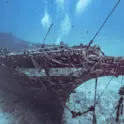
Climate action
04 Nov 2022
From ghost gear to microbe memories: 4 Frontiers articles you won’t want to miss
by Angharad Brewer Gillham, Frontiers science writer Image: Shutterstock.com At Frontiers, we bring some of the world’s best research to a global audience. But with tens of thousands of articles published each year, many often fly under the radar. Here are just four amazing papers you may have missed. The hunt for ghost gear 25-30% of the plastic waste in the sea is lost fishing gear, or ‘ghost gear’, some of it now up to 60 years old. This ghost gear devastates the environment not only through continuing to trap fish, but also by shedding microplastics into the environment which then enter the food chain. Once it sinks as far as the sea floor, it becomes invisible from above – a hidden threat to the marine ecosystem. A team led by Andrea Stolte from the World Wildlife Foundation, writing in Frontiers in Marine Science, reported a successful ghost-hunting collaboration between fisherfolk, scientists, and divers in the Baltic Sea. This coalition of stakeholders had several options for hunting down the ghost gear. Traditionally, when lost gear is spotted, fisherfolk use search hooks and other similar tools to try to retrieve it. However, this proved to be inefficient and damaging to the […]

Environment
03 Nov 2022
60% of home ‘compostable’ plastic doesn’t fully break down, ending up in our soil
By Suzanna Burgelman, Frontiers science writer Image: Citizen scientist image from www.bigcompostexperiment.org.uk In a UK-wide study, researchers found that 60% of home-compostable plastics do not fully disintegrate in home compost bins, and inevitably end up in our soil. The study also found that citizens are confused about the labels of compostable and biodegradable plastics, leading to incorrect plastic waste disposal. These results highlight the need to revise and redesign this supposedly sustainable plastic waste management system. Global plastic pollution remains one of the biggest environmental challenges of our time. A new OECD report shows that plastic consumption has quadrupled over the past 30 years. Globally, only 9% of plastic waste is recycled, while 50% ends up in landfills, 22% evades waste management systems, and 19% is incinerated. In response to this pollution crisis, several countries have set targets to eliminate all single-use plastics and to make plastic packaging 100% recyclable, reusable, or compostable by 2025. Compostable plastics are becoming more common as the demand for sustainable products grows. The main applications of compostable plastics include food packaging, bags; cups and plates, cutlery, and bio-waste bags. But there are some fundamental problems with these types of plastics. They are largely unregulated and […]
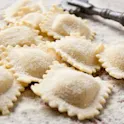
Featured news
02 Nov 2022
Italian researchers discover new recipe for extending shelf life of fresh pasta by 30 days
By Peter Rejcek, science writer Image credit: Raimunda Losantos / Shutterstock.com Pasta is one of the most popular food staples in the world, but fresh pasta has a limited shelf life. Scientists in Italy have cooked up a novel process for preventing or delaying spoilage by changing packaging protocols, as well as adding antimicrobial probiotics to the dough. Not only does this new method extend storage of fresh pasta by 30 days, it helps reduce food waste. Pasta is serious business in Italy, with reportedly more than 300 specific forms known by some 1,300 names. There is even a 55-year-old ‘pasta law’ that governs its production and manufacture. But that doesn’t mean the beloved food staple is shut off from innovation. ► Read original article► Download original article (pdf) Now, Italian researchers have cooked up a new process for extending the shelf life of fresh pasta by 30 days, using a novel packaging process that also involves applying bioprotective probiotic cultures to the dough. They published this new recipe for better preserving fresh pasta in the journal Frontiers in Microbiology. The problem with fresh pasta Most fresh pasta sold in stores today is produced through an industrial process that includes heat-treating the […]

Featured news
01 Nov 2022
Open science platform Frontiers publishes new Nobel Collection articles
Five more Nobel Prize winners publish free scientific article collection for children Last year in September, as many young people prepared to go back to school, the very first Nobel Collection, featuring articles written by Nobel Laureates, was launched by Frontiers for Young Minds (FYM), a unique, completely free, open access kids’ science journal. The Collection has been a huge success, having been viewed over half a million times online. Today marks the release of the second Nobel Collection articles, connecting curious minds of all ages to exceptionally high-caliber scientists and offering exciting insights into the world of real science. As for all FYM publications, each of the five articles has been written for young people aged 8 to 15 and has been reviewed by kids themselves to ensure they are understandable, fun, and engaging. Photo credit: Frontiers Freely available to people everywhere from today, the 2022 Nobel Collection aims to ignite interest in various fields, and is comprised of the following contributions: Gravitational Waves – a new window on the Universe, written by Barry C. Barish, awarded The Nobel Prize in Physics in 2017. Did you know that the phenomenon of gravitational waves was predicted by Einstein’s theory of General Relativity? In this […]
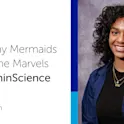
Frontiers news
28 Oct 2022
Aliyah Griffith – Mahogany Mermaids and Marine Marvels
Author: Thimedi Hetti I had a pleasure of speaking with Aliyah Griffith, PhD student at the University of North Carolina Chapel Hill, about her journey into marine science, setbacks, and achievements. With the research shift more towards coral reef management, Aliyah is hoping to partner with Barbados to explore the techniques while also partnering with the American Museum of Natural History in New York to review some of the pieces from their 4000-piece coral fossil collection. “I want to use the fossils to try and recreate what old reefs used to look like compared to newer ones,” Aliyah hopes. Photo credit: Frank Griffith So, how was Aliyah’s initial interest in marine science ignited? She always knew she liked animals and was fortunate to have visited many nature centers, aquariums, and zoos growing up. “Around the age of 8, I asked a dolphin trainer what her job was. When she answered ‘marine biologist’, I knew that was what I wanted to do. Later in high school, I did a shadowing program at an aquarium, worked at a veterinary hospital and a nature center to expose myself to multiple areas. Because of this exposure, I was certain I wanted to focus on […]